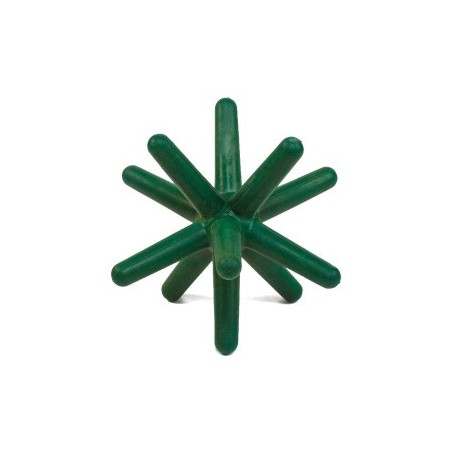The premise of this study was that collection of oral fluid on commercial sites of individually housed sows could facilitate breeding-herd surveillance for infectious diseases and improve animal and worker welfare by reducing the need to restrain sows for sample collection. However, to the knowledge of the authors, there is no published data on the collection of oral-fluid samples from individually housed sows and, likewise, there is little data on the repeatability of test results on successive oral-fluid samples collected from the same individual in commercial settings. Therefore, the purpose of this study was not only to evaluate the concept that oral-fluid collection in breeding herds is plausible, but also to provide basic collection parameters in relation to parity, a training effect, and diagnostic repeatability.
The study involved 513 individually housed, mixed-parity, gestating sows on two separate commercial farms. Three parameters were of interest: the relationship between sow age (parity) and successful oral-fluid collection, the effect of re-sampling (“training”) on collection, and the repeatability of diagnostic test results on two successive oral-fluid samples collected from the same animal. The study was carried out by attempting oral-fluid collection on 2 successive days under the same conditions, ie, ropes were placed at approximately 7:00 am, prior to feeding. Oral fluids were collected by hanging a 1,59 cm diameter 100% cotton rope at the front of each crate for 30 to 45 minutes. A volume of ≥ 1.0 mL was defined as a successful collection. The selected samples were tested for PRRSV by RT-PCR and for anti-PRRSV antibodies.

Oral fluids were collected on Day 1 from 119 of 513 individually housed sows (23.2%). On Day 2, samples were collected from 245 of the same 513 animals (47.8%). Only four animals that provided a successful collection on Day 1 did not provide a sample on Day 2. Parity was associated with oral-fluid collection, with lower collection success observed at higher parities. The total number of animals from which an oral-fluid sample was collected was significantly higher on Day 2 than on Day 1. This increase in response was observed at all parity levels.
Implications
• Oral-fluid collection is most likely to be successful in younger sows.
• Regardless of age, improved collection success on re-sampling suggests that sows could be trained for oral-fluid collection, eg, during quarantine.
• The strong correlation (r = 0.82) observed between PRRS oral-fluid antibody test results on different samples from the same animal strengthens the validity of oral-fluid testing.
• The use of oral fluids for monitoring PRRSV in breeding herds is plausible and could improve the current level of surveillance in most breeding herds by facilitating sample collection from animals and reducing the need to collect blood samples.
Pepin B, Liu F, Main R, et al. Collection of oral fluid from individually housed sows. J Swine Health Prod. 2015;23(1):35–37.





